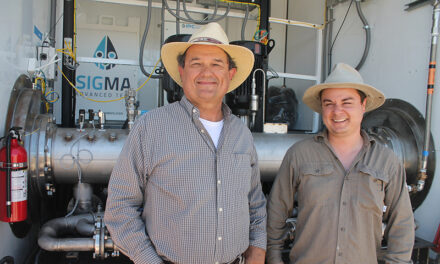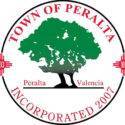Los Lunas
Cooperation and compromise – that’s what a mixture of farmers, developers and environmentalists agreed upon when they pondered how to balance water use in the area Tuesday night.
The meeting, held in Los Lunas, was another step in a series of community conversations held by the Middle Rio Grande Water Assembly and the Middle Rio Grande Council of Governments to develop a water management plan for the region.
“Each person has a different perception about water use,” said Bob Wessely, chair of the Water Assembly. “There is no one person here tonight who can act solely as an objective consultant. When you place everyone together, then you can come out with something fair.”
Public input from the Valencia County meeting, along with comments from regional community conversations in Bernalillo and Sandoval counties, is being used to draft goals for the water plan.
“The frugality of water is very interesting,” said Mary Lou Chavez, executive director of the Belen Chamber of Commerce. “You have to start someplace. This gets people talking and thinking about water conservation. Each of us has to be willing to give.”
More than 64 concerned citizens present at the meeting broke into three large groups where they worked on balancing a water budget, using a computer model to figure out how to share and conserve water by using numbers and different scenarios.
The strategy used for the water budget is based upon inflows, consumption, outflows and the resulting surplus or deficit. The water balancing exercise separates uses and rates, allowing the people to choose the distribution of water so as to balance income and consumption to reach a zero deficit goal.
On average, the water assembly has said the Middle Rio Grande region uses 70,000 acre-feet more water than is available to it on an annual basis.
Much of the deficit is made up by pumping groundwater, and continued depletion will have long term consequences. Hard choices and difficult trade-offs will be required to manage this problem.
“We’ve got a tough problem. We’re out of balance by a big amount. We must think smart, and consider the direct and indirect affects of our decision. None of us are all right,” Wessely said.
Looking at short- and long-term use, concerned citizens expressed the difficulties and complexities they encounter while balancing the budget as demand for water grows.
Farmer and community activist Ray Garcia said, “In the end, this will come down to politics and money. We better be active and make sure the legislature does what we want them to do.”
The New Mexico Interstate Stream Commission oversees and partially funds the water budget planning effort. The public ideas and recommendations expressed in the plan are not set in stone to make anything happen, Wessely said.
“It’s a road map, not a decision maker in itself. This plan needs to have a broad basis of support. You need to bring the public and local government together behind the plan. You are here tonight to make sure the plan meets your needs,” he said.
Some of the conclusions presented by the groups involve taking out non-native plants and reducing the surface flow of Elephant Butte to decrease evaporation or moving water from the lake to storage up north in caves.
On the agricultural front, it was suggested that farmers change crops for less water usage in exchange for tax breaks and economic incentives. Other action could be taken to irrigate at night and close ditches that lead to irrigation systems.
Angelo Baca, president of the Valencia County Farm Bureau, said although the intent of the Water Assembly and the long-range plan is good, “we’re going to have to be very cautious about how that data is used and who will decide what course of action to really follow.
“We, as citizens of Valencia County, need to look into the condemnation of property and water rights as it is written currently in the state constitution. Perhaps an amendment to the constitution may be in order to ensure property and water rights of individuals.”
The citizens discussed ways to reduce increased water usage by a growing number of businesses and homes coming to the county. It was suggested higher prices and fines might force people not to use so much water.
Groups encouraged folks to monitor their own water usage at home in tasks such as watering the lawn, taking showers and washing their cars.
“All of us have to follow conservation steps, no exceptions,” said group member Michael Gonzales. “We want the politicians to come out and see this plan. We need them here to help solve this problem. We have the talent to solve this emergency.”
Leroy Chavez agreed. “All of us need to reduce our use. We’re all in this together. Let’s stop the fighting between farmers and developers. Water is a valuable resource. Let’s take care of it.”
Developer Max Kiehne said the county will never run out of water.
“We can produce more if we do,” he said. “I think this is a good, healthy process, but there are a whole lot of assumptions. I question evaporation. It’s not a loss. And how can you have more water going out that you having going in?”
Although the suggestion was made to put the water budget model on-line for public access, questions were raised as to where the figures presented came from.
Betty Behrend, utilities director for the Village of Los Lunas, said she’d like to see an economic analysis on how much it would cost to take each step in the water budget and what impact they will have at both the county and state level.
“Everyone realizes it won’t be easy to balance a budget. We’re all gonna have to work together in order to make it work, so the plan is accepted by everybody. We can’t expect ag people, environmentalists or the city to give it all up,” she said.
Citizen Carol Hart ended the meeting on a positive note. “Valencia County needs to educate each other, not separate. Let’s keep our eyes focused on the horizon. We can do this. Being a part of the solution is the only way we can get there.”
Another community conversation will be held in early spring or summer. The Annual Water Assembly will discuss how to balance water on Saturday, April 6, from 8 to 5 p.m. at the University of New Mexico Anthropology Hall. Admission is $5 for pre-registration or $10 at the door.
The Middle Rio Grande region is just one of 16 pieces in the state water plan puzzle. In June of 2003, the region’s final plan will be delivered to the Interstate Stream Commission.
What is included in the Water Budget?
- The water expense or consumption can be broken into six major uses: riparian environments (26 percent), open water evaporation (11 percent), irrigated agriculture (19 percent), office, municipal and industrial purposes (6 percent) and domestic purposes (11 percent). Elephant Butte Reservoir evaporation (27 percent) is also charged into the region.
- Based upon averages from 1972 to 1997, the Region’s average water income is 1,424,000 acre feet per year (afpy), downstream delivery requirements are 1,094,000 afpy, and the region’s current consumption is 385,000 afpy.
- The average net deficit or shortage amounts to an unsustainable 55,000 acre feet per year.
- Municipal, county and regional plans will be mutually adopted to present a single unified version of the future of water management. As documents are drafted for the regional water plan, they will be available for review and comment at www.WaterAssembly.org or by contacting the Middle Rio Grande Council of Governments at 247-1750.















